
Starfish or sea stars are star-shaped echinoderms belonging to the class Asteroidea. Common usage frequently finds these names being also applied to ophiuroids, which are correctly referred to as brittle stars or basket stars. Starfish are also known as asteroids due to being in the class Asteroidea. About 1,900 species of starfish live on the seabed in all the world's oceans, from warm, tropical zones to frigid, polar regions. They are found from the intertidal zone down to abyssal depths, at 6,000 m (20,000 ft) below the surface.

The Tasmanian giant crab, also known as the giant deepwater crab, giant southern crab, queen crab, or bullcrab, is a very large species of crab that resides on rocky and muddy bottoms in the oceans off Southern Australia. It is the only extant species in the genus Pseudocarcinus.
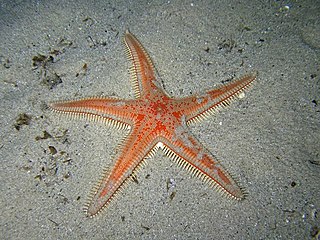
Astropecten aranciacus, the red comb star, is a sea star of the family Astropectinidae. It is native to the east Atlantic Ocean and the Mediterranean Sea.
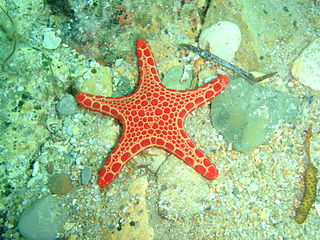
Goniasteridae constitute the largest family of sea stars, included in the order Valvatida. They are mostly deep-dwelling species, but the family also include several colorful shallow tropical species.
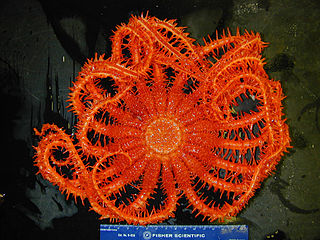
The Brisingids are deep-sea-dwelling starfish in the order Brisingida.

Cidaridae is a family of sea urchins in the order Cidaroida.
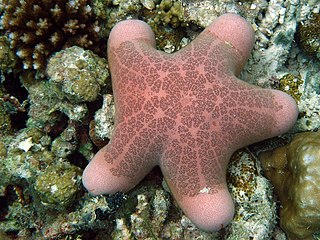
The Oreasteridae are a family of sea stars in the class Asteroidea.
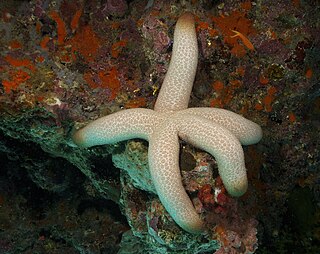
The Mithrodiidae is a family of starfish in the order Valvatida.

Thromidia is a genus of starfish in the family Mithrodiidae.
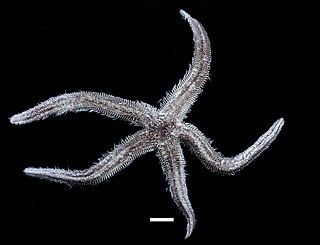
Luidia superba is a tropical species of starfish in the family Luidiidae. A single specimen was found off the Pacific coast of Colombia in 1888; the species has since been found in the Galapagos Islands. It is endemic to this area and has not been recorded elsewhere.
Anasterias rupicola is a species of starfish in the family Asteriidae. It is found in shallow waters in the Southern Ocean and sub-Antarctic Indian Ocean.

Callopatiria is a genus of starfish of the family Asterinidae. The genus is found in shallow waters off South Africa, down to a depth of about 82 m (269 ft).
Parvulastra parvivipara is a very small species of starfish in the family Asterinidae. It is a viviparous species and gives birth to live young. It lives in rock pools on intertidal granite rocks in a limited area of South Australia.

Marthasterias is a genus of starfish in the family Asteriidae. Both species in the genus are commonly known as the spiny starfish.
Trophodiscus almus is a species of starfish in the family Astropectinidae. It is found in fairly deep waters in the Sea of Okhotsk, the Sea of Japan and around the Japanese island of Hokkaido. It is very unusual among starfish in that it broods its young on its upper surface. Its common name in Japanese is "Komochi-momiji".

Fromia ghardaqana, common name Ghardaqa sea star, is a species of marine starfish in the family Goniasteridae.

Callopatiria formosa, the grey starfish or beautiful starfish, is an echinoderm in the family Asterinidae found in South Africa.

Thromidia catalai, sometimes called the heavy starfish, is a species of starfish in the family Mithrodiidae in the order Valvatida. It is native to the Indo-Pacific region. Thromidia catalai is one of the largest and heaviest starfishes in the world. It is reported to weigh as much as 6 kg (13 lb) and have a diameter of 60 to 65 cm. This species was first described by the Australian biologists E. C. Pope and F. W. E. Rowe in 1977, the type locality being New Caledonia.
Thromidia seychellesensis is a species of starfish in the family Mithrodiidae. It occurs in Seychelles, Indian Ocean.














